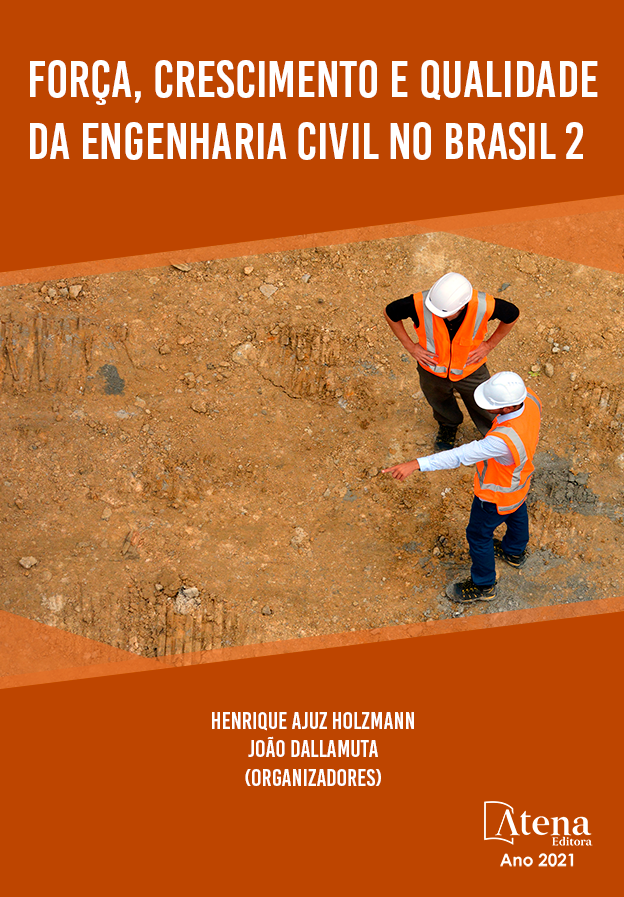
ESTABILIDADE GLOBAL DE PÓRTICOS PREENCHIDOS COM ALVENARIA
As alvenarias são elementos modulares que formam painéis estruturais ou de vedação nas edificações. Por ser uma alternativa mais economicamente viável, que provê conforto termo-acústico satisfatório e isolamento contra penetração de umidade, além de ter grande oferta no mercado nacional tanto do material quanto da mão-de-obra para aplicação, seu uso é largamente difundido no país. As estruturas pré-moldadas de concreto armado, atualmente tem sua aplicação limitada pela estabilidade global das edificações sob ações externas. Convém afirmar que a rigidez das ligações interfere em muito na estabilização da edificação reduzindo seus deslocamentos verticais e horizontais, possibilitando menor influência dos deslocamentos nos elementos de vedação, reduzindo o aparecimento de fissuras por tração, esmagamento por compressão e influência nos vãos de portas e janelas que impossibilitem o cumprimento de suas funções. As alvenarias de preenchimento dos pórticos, por sua vez, não são desprovidas de resistência. Mesmo que possuam menor capacidade portante em comparação a estrutura, conferem possibilidade de aumento da rigidez da estrutura através da capacidade portante residual dos seus elementos. Análogo à semi-rigidez rotacional das ligações, que são providas em forma de alteração do método construtivo convencional da estrutura, o aproveitamento da rigidez da alvenaria também necessita de cuidados específicos na execução e maior detalhamento na consideração do efeito. Esse artigo apresenta as variáveis que envolvem a obtenção do valor de rigidez, as características da alvenaria para possibilitar esse aproveitamento de capacidade de incremento da rigidez ao pórtico1, o método de análise aplicado e resultados obtidos através dele.
ESTABILIDADE GLOBAL DE PÓRTICOS PREENCHIDOS COM ALVENARIA
-
DOI: 10.22533/at.ed.89521080211
-
Palavras-chave: Alvenarias, Pórtico, Enrijecido, Estabilidade.
-
Keywords: Mansory, Porches, sttifening, stability.
-
Abstract:
Masonry is modular elements that forms structural or sealing panels in buildings. By been a more economically viable alternative, which provides satisfactory thermo-acoustic comfort and insulation against moisture penetration, besides having a great offer in the domestic market both of the material and of the workforce for application, its use is widely diffused in the country. Precast concrete structures are currently limited by the global stability of buildings under external actions. It should be stated that the stiffness of the connections interferes greatly in the stabilization of the building, reducing its vertical and horizontal displacements, allowing less influence of the displacements in the sealing elements, reducing the appearance of cracks by traction, compression crushing and influence in the window and door spans that make it impossible for them to perform their duties. The masonry of filling the porticos, in turn, are not devoid of resistance. Even if they have a lower bearing capacity compared to the structure, they give the possibility of increasing the rigidity of the structure through the residual bearing capacity of its elements. Similar to the rotational semi-rigidity of the connections, which are provided in the form of alteration of the conventional constructional method of the structure, the use of the rigidity of the masonry also requires specific care in the execution and greater detail in the consideration of the effect. This article presents the variables that involve obtaining the rigidity value, the characteristics of the masonry to enable this use of capacity to increase stiffness to the portal, the method of analysis applied and results obtained through it.
-
Número de páginas: 18
- LUCIANO CARNEIRO REIS
- RICARDO ALBERTO BARROS AGUADO
- YURI LEANDRO ABBAS FRAZÃO
- GABRIEL MENESES SOUZA
- Silas Pacheco Rodrigues Junior


